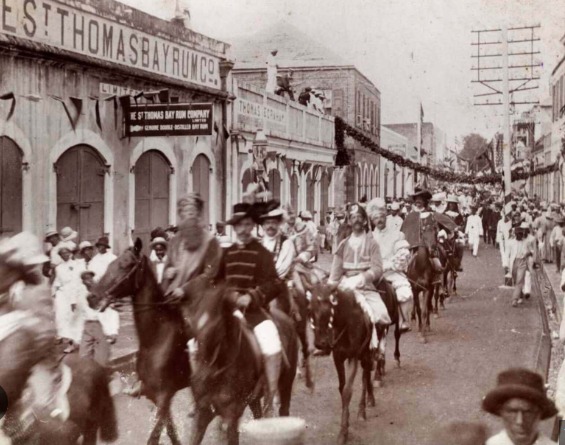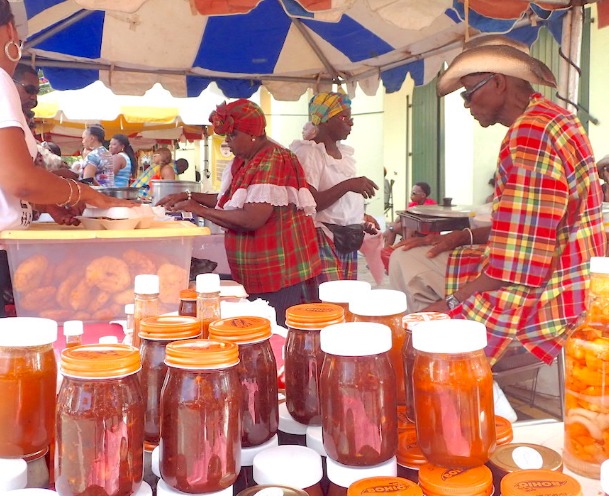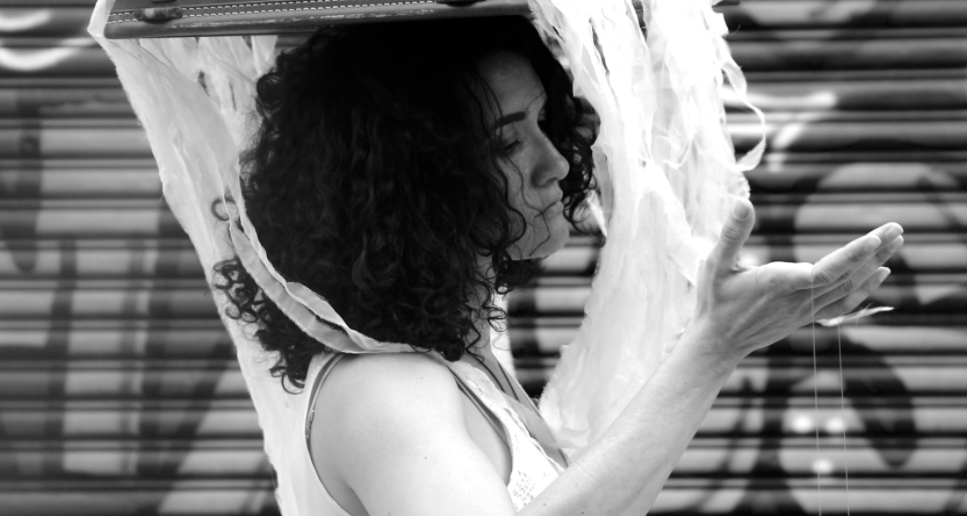By Gimel Pinto
(STT-January 4, 2022) Many people outside of the Caribbean see the enthusiasm that carnivals and festivals provide. Still, the natural origins of Caribbean carnivals and festivals lie in the colonization and religious conversion that took place when European explorers made their way to the region.
Today, it is a celebration and occasion to commemorate freedom and the abolition of slavery.
In the Virgin Islands, this celebration can last up to a month, including planning, activities, music, dancing, and much-needed rehabilitation. Artists display their traditional costumes and crafts, with preparation starting a year in advance to create extravagant costumes, masks, and performances.
Carnival is a time to remember and honor the ancestors in the Virgin Islands.
Carnival is a time to remember and honor the ancestors in the Virgin Islands. It is also a time for dancers in extravagant costumes to show off their art and culture.
Carnival celebrations have expanded over time to include Canada and the United States. Several states in the U.S., including New York, Miami, Florida, and Texas, among others, host Carnival. The most significant Caribbean Carnival celebration in North America takes place in Toronto.
This celebration honors the local way of life and inspires travelers, bringing in more money to the economy than one might anticipate from such an event. At this time of year, hotels are fully booked, taxis are congested, and when you pass the neighborhood artisan market, you see happy traders and a thriving local economy.
As a result, what was once only a historical occurrence is now a thriving industry needing sustainable development. However, before we speak of the development, we must revisit the roots of these vibrant events.
African Influence
Carnival originated with the African people who were enslaved and deprived of their freedom due to the transatlantic slave trade.

The Yoruba, who was transferred from Nigeria, was the most recent ethnic group to reach the islands. Because they were forbidden from observing their religion, African immigrants in the Caribbean were forced to pose as Catholic saints.
They also developed a new culture by fusing European practices with West African traditions, which allowed their culture to endure oppression.
Canboulay was referred to as “burning sugar cane” in Creole. Enslaved people gathered for the Canboulay, a nightly parade, to put out sugar cane fires at a neighboring sugar cane farm.
In addition to singing, dancing, drumming, engaging in stick fights, and igniting torches, they would march to extinguish fires. In Yoruba, the drummers of Canboulay were spiritual figures called Shango or Rada; in English, they are now known as Orisha.
Africans, for instance, created drums in the U.S. Virgin Islands (previously known as the Danish West Indies) by simply stretching deerskin over a calabash or a small barrel. An empty pot worked just as well. But traditional African dances and drumming were frequently dreaded by Europeans.
They speculated that people would use devices to coordinate uprisings and communicate covertly. Numerous regulations attempted to strip Africans of their cultural identity, including prohibitions on drumming. They were frequently asked to relinquish their cultural practices and at least partially embrace European customs.
St. Thomas
While the Islands were still a part of the Danish West Indies, St. Thomas held its first Carnival on February 14, 1912, and its second one on February 14, 1914. A procession, bands, unique games, and other carnival staples were all part of the early festivities of Carnival. There would not be another Carnival on St. Thomas for 38 years after 1914.

In 1952, Ron De Lugo, a radio personality and the first and longest-serving representative in Congress recalled the event.
De Lugo declared that there needed to be a carnival-style festival celebration. However, many people did not think it was a good idea because there was little social interaction between the classes, and the public was aware of these distinctions.
De Lugo said that he first believed the neighborhood would not take part in the Carnival parade in a later interview. However, since people started showing up, Carnival has gone on each year, regardless of the conditions. In addition, several other elements have been included throughout time.
The month-long St. Thomas festival gets underway with a variety of pageants and calypso performances. Most major carnival activities, including J’ouvert, the Food Fair, parades, and fireworks, occur during the final week.
J’ouvert is an occasion to dance carelessly, throw paint, and eat and drink excessively. In addition, various local delicacies, drinks, and pastries are displayed at the food festival.
Carnival was an annual celebration that provided a platform for cultural expression, fraternity, and unity.
Carnival was an annual celebration that provided a platform for cultural expression, fraternity, and unity in the Virgin Islands. However, due to COVID, the island had to cancel the Carnival celebrations in 2020 and 2021.
Nevertheless, St. Thomas had stabilized by 2022, and festivities had resumed in full force. Favorite Carnival activities included the food market, the J’ouvert, music throughout the community, and a procession with both children and adults.
St. Croix
The Crucian Christmas Festival, also known as St. Croix’s Carnival, started as a one-time celebration in 1952 after historic holiday customs were revived and changed into contemporary Carnival. Africans were permitted to observe Christmas and New Year’s on St. Croix.

During Christmas and other occasions, such as Easter and Whit Monday, masquerading was common. Social gatherings preserved musical traditions and traditional dances like the bomboula, lancer, and quadrille. The Carnival festival brought customs together into a single, sizable occasion.
The Carnival Festival is held in St. Croix between Christmas and New Year’s. Both Christiansted and Frederiksted host events during the Crucian Christmas Carnival, such as calypso performances, Latin music venues, food fairs, horse races, parades, and the village.
St. John
St. John Carnival coincides with Independence Day in the United States. The St. John Fourth of July celebrations changed into Carnival in 1960, and the holiday lasted for more than a week. Today, the celebration climaxes on July 4th and lasts for many weeks.

In the weeks leading up to July 3rd (Emancipation Day) and July 4th, steelpan performances and pageants kick off the month-long St. John Festival (Independence Day). The village, the food fair, and the parade are three major activities during the last week.
The Future of Carnival
Carnival is one of the most well-known cultural extravaganzas in the area, and it unites people. Carnival is an event that combines music, dancing, costumes, pageantry, and performance. Also on exhibit is the social and historical background of the island.

In its expansion, Carnival has produced several economic benefits throughout the years, including increased goodwill among the public, wealth development, the protection of intellectual property rights, and more.
Carnival has several advantages. However, Carnivals, like other traditions, need to adapt to the changing times to survive, better serve the communities they are part of, and attract a wider audience. Local administrations need to fortify specific tourism typologies to use them as catalysts for the island’s economic growth.
Local administrations need to fortify specific tourism typologies to use them as catalysts for the island’s economic growth.
Even though there are numerous opportunities for collaboration between carnivals and the creative industry ecosystem, current initiatives are still in their infancy.
To preserve carnivals, public policy should play a significant role in enacting stricter restrictions regarding heritage, boosting funding for folkloric organizations, encouraging entrepreneurship, and introducing new economic models.
Additionally, there is the issue of sustainability and the requirement to lessen the negative effects of these festivities on the natural world. On the bright side, technological advancements like facial recognition augmented reality, and real-time translation are helping to make carnivals safer for people who have never seen them.





It was interesting to learn that there are carnivals that honor the local way of life while also bringing in more money to the economy because of travelers and tourists since they often have artisan markets set up as well. Speaking of carnivals, I’m considering going to one with my kids next month when we visit Landover Hills for a weekend trip. I’ll take note of this while I look for carnivals in Maryland to consider checking out during our stay there.